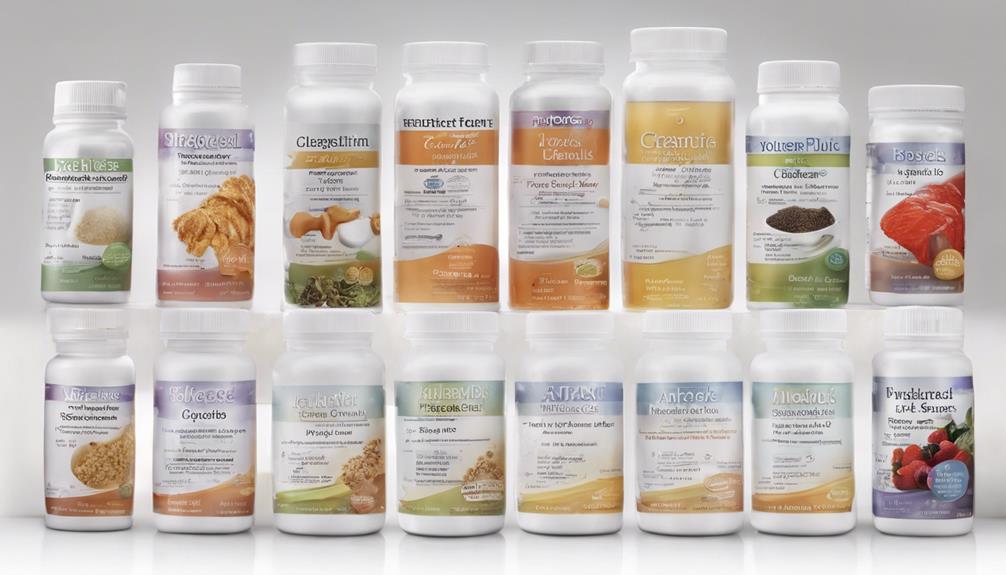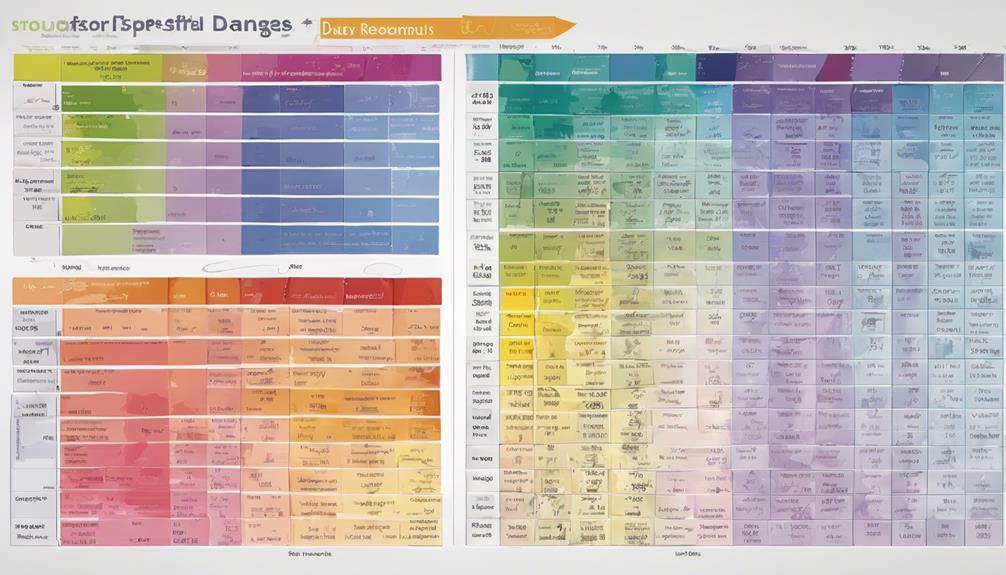Exploring the world of **adult feeding tube formulas** reveals a fascinating array of options tailored to unique dietary needs. Experience the wide range of customization and selection designed to support individual nutritional goals. Discover the diverse offerings within this realm to address specific dietary needs with precision and care. Find out the exciting possibilities and advantages awaiting those seeking personalized feeding solutions in this dynamic field.
From standard formulas to specialized blends, the landscape is vast. But what sets the top performers apart?
Join us as we unravel the nuances of these top feeding tube formulas, shedding light on key considerations and factors that can markedly impact the well-being of adult patients relying on enteral nutrition.
Key Takeaways
- Consider caloric density, osmolality, fiber content, and individual needs when selecting tube feeding formulas.
- Popular options like Jevity, Osmolite, Nutren, and Isosource cater to various nutritional requirements.
- Specialized formulas exist for high protein, high fiber, and disease-specific needs to address unique health concerns.
- Consult healthcare providers for personalized advice on choosing the most suitable tube feeding formula.
Overview of Feeding Tube Formulas
When considering the most suitable nutrition support for individuals requiring feeding tubes, understanding the diverse characteristics of feeding tube formulas is essential. Enteral formulas vary in caloric density, ranging from 1 to 2 calories per mL, allowing for tailored nutrition based on individual needs. The osmolality of these formulas is a critical factor, with isotonic options around 300 mOsm/kg to prevent tolerance issues and guarantee proper absorption.
Fiber content within enteral formulas also plays a significant role, as soluble fiber can help regulate bowel function and reduce the risk of clogging in feeding tubes. Additionally, enteral formulas come in different types – polymeric, peptide-based, or modular – each with unique protein compositions to meet specific dietary requirements effectively.
The delivery systems for enteral formulas offer choices between open and closed systems, with closed systems being preferred for their ability to reduce infection risks and allow for extended hang times, ensuring a smoother and safer feeding process for individuals requiring tube feeding.
Factors to Consider

Considering age, fluid status, GI function, food allergies, and diet preferences are essential factors when selecting enteral nutrition formulas for individuals requiring tube feeding. Most patients tolerate standard enteral formulas well, making them a common choice.
Specialty formulas, on the other hand, necessitate medical justification due to cost implications. To make informed decisions, one can gather information from formula company websites, HCPCS code groupings, and regular guide updates.
When exploring options, one can observe that ASPEN guidelines on enteral nutrition formulas don't endorse specific brands; these guidelines are crafted by the ASPEN Enteral Nutrition Task Force. Leveraging additional resources such as adult, pediatric, and infant formula guides, modular products guides, and manufacturer websites can provide updated insights.
Popular Tube Feeding Formulas
After considering factors such as age, fluid status, and GI function, it's valuable to explore popular tube feeding formulas for adults, including Jevity, Osmolite, Nutren, and Isosource. These formulas are tailored to meet different nutritional needs based on caloric density, fiber content, and osmolality.
Jevity, known for its high protein content, is ideal for individuals requiring increased protein intake. Osmolite, a standard formula, offers balanced nutrition suitable for general tube feeding requirements. Nutren, containing fiber, supports gastrointestinal function and promotes bowel regularity. Isosource is another popular choice that provides complete nutrition for tube feeding.
When selecting a tube feeding formula, it's essential to consider individual nutritional needs and consult with healthcare professionals to determine the most appropriate option based on factors such as calorie requirements, fluid restrictions, and digestive health. These popular formulas offer a range of options to support ideal nutrition through tube feeding.
Specialized Formulas for Specific Needs

Specialized enteral formulas are meticulously crafted to address specific medical conditions such as diabetes, renal failure, or respiratory issues, offering tailored nutrient profiles to support individual health needs. These specialized formulas are designed with unique nutrient compositions to meet the specific requirements of patients with distinct health concerns. They may contain adjusted macronutrient ratios, fiber content, or micronutrient concentrations to effectively manage targeted health conditions. Examples of specialized formulas include high protein options for muscle wasting conditions, high fiber formulas for gastrointestinal issues, and disease-specific formulas tailored to manage conditions like diabetes or renal failure. Consulting with a healthcare provider or dietitian is important to determine the most suitable specialized enteral formula based on individual health needs.
| Type | Examples |
|---|---|
| High Protein | Muscle Wasting |
| High Fiber | Gastrointestinal |
| Disease-Specific | Diabetes Management |
Tips for Choosing the Right Formula
When selecting an enteral formula for tube feeding, it's critical to carefully consider various factors to secure excellent nutrition and health outcomes.
- Caloric Density: Look for formulas with a caloric density ranging from 1.2 to 2.0 calories per mL, especially beneficial for patients with volume restrictions.
- Osmolality Levels: Aim for around 300 mOsm/kg to prevent tolerance issues, particularly important when using high osmolality formulas.
- Fiber Content: Evaluate the balance of soluble and insoluble fiber to regulate bowel function and reduce the risk of tube clogging.
Considering these factors will help you make an informed decision when choosing the right tube feeding formula. Remember to assess the specific needs of the individual being fed through the tube, as well as any existing medical conditions that may influence the selection process.
Frequently Asked Questions
What Are the Most Common Tube Feeding Formulas?
Rest assured!
The most common tube feeding formulas for adults include Jevity, Osmolite, and Nutren. These formulas are tailored to meet various nutritional needs, such as caloric density, osmolality, and fiber content. Depending on the patient's requirements, formulas with higher caloric density or specific compositions like polymeric, peptide-based, or modular are available.
Delivery systems can also vary between open and closed systems, with closed systems offering reduced infection risks and longer hang times.
Can I Make My Own Tube Feeding Formula?
We can make our own tube feeding formula, but it requires careful planning under healthcare supervision. DIY formulas may lack essential nutrients, risking malnutrition. Consulting with a dietitian or doctor is important to meet individual nutritional needs.
Homemade formulas have higher contamination risks and nutrient imbalances than commercial options. Healthcare providers can guide us on ingredients, ratios, and preparation methods. It's essential for safety and effectiveness to seek professional advice when creating homemade tube feeding formulas.
What's the Difference Between Jevity and Osmolite?
Jevity and Osmolite are both standard polymeric formulas, but they differ in protein composition and caloric density. Jevity contains intact protein and offers 1.06 calories per mL, while Osmolite has hydrolyzed protein and provides 1 calorie per mL.
Additionally, Osmolite has a higher osmolality than Jevity. When choosing between the two, consider individual tolerances and preferences. Consulting a healthcare provider or dietitian can help determine the best option based on specific nutritional needs and digestive capabilities.
Is Feeding Tube Formula Covered by Insurance?
We've found that insurance coverage for feeding tube formulas varies based on individual plans. Prior authorization might be necessary, as some plans classify formulas as durable medical equipment. Patients should consult their insurance provider to clarify coverage specifics.
It's important to note that insurance coverage can be contingent upon medical necessity, so discussing this with a healthcare provider is crucial. This information can help navigate the insurance process for feeding tube formula coverage.
Conclusion
Optimal selection of the right feeding tube formula for adults involves careful consideration of various factors like age, GI function, and dietary preferences. By consulting with healthcare professionals and utilizing reputable sources, patients can find the most suitable formula to meet their nutritional needs.
Remember, the key to successful enteral nutrition lies in choosing the formula that promotes patient tolerance and overall well-being. Make mindful choices for optimal feeding tube outcomes.










